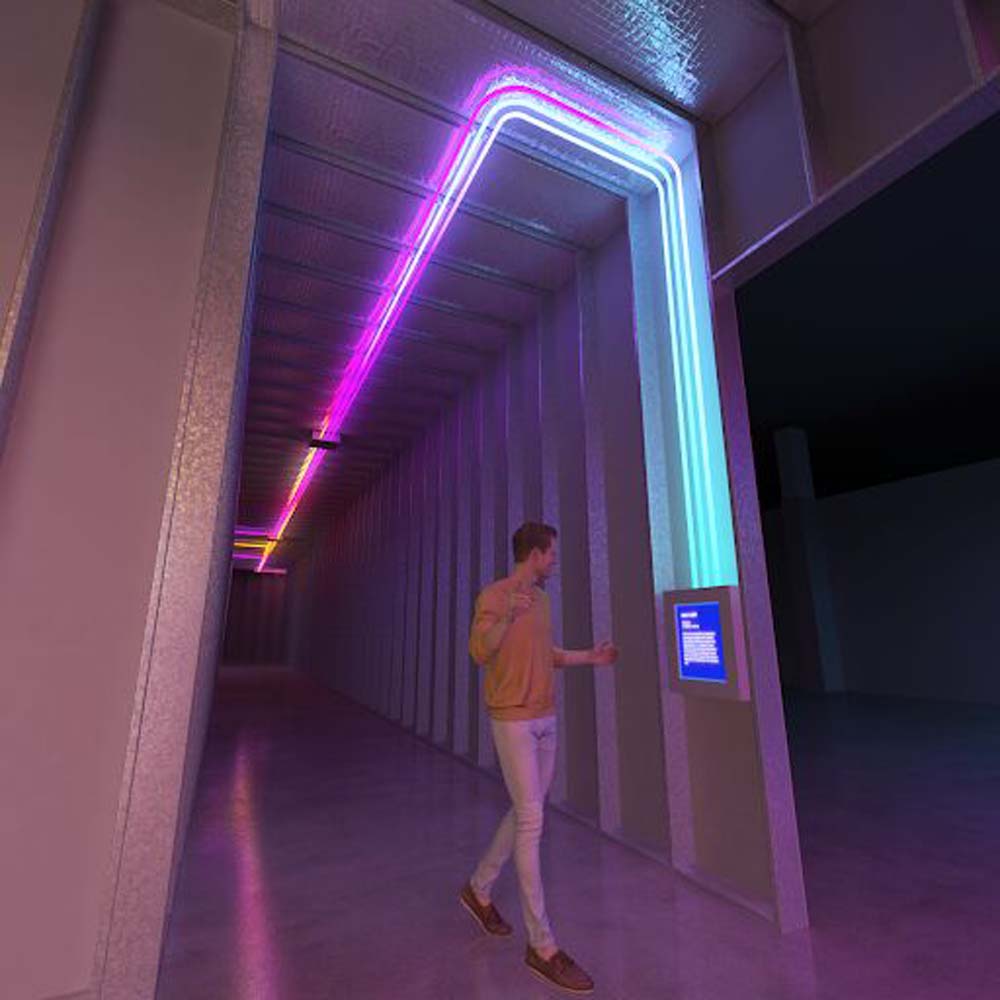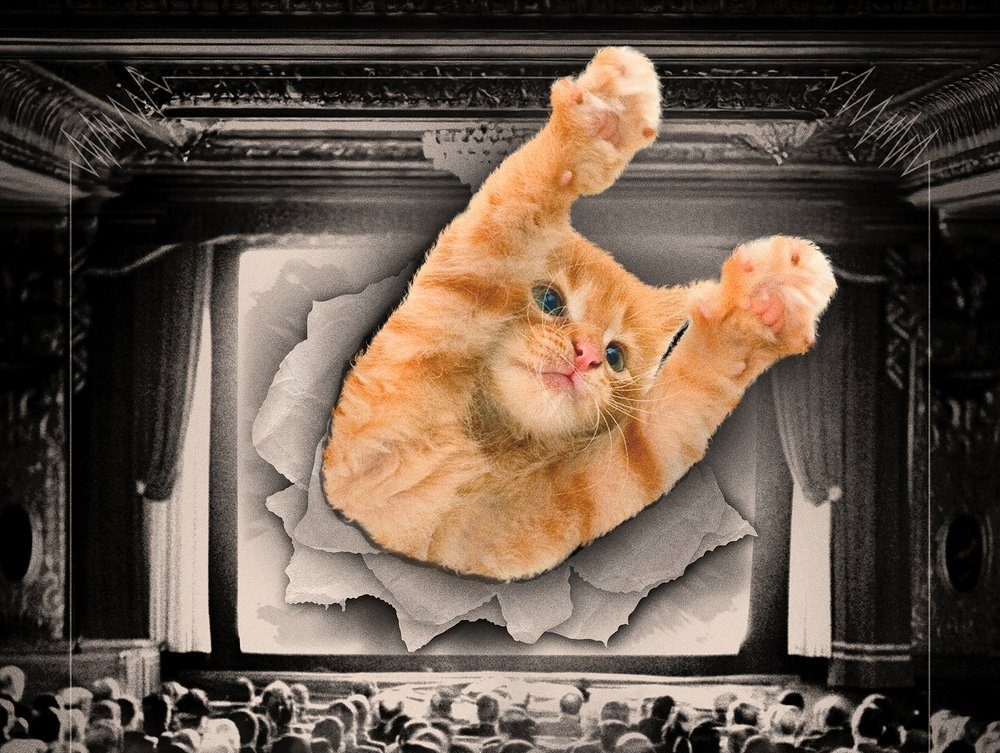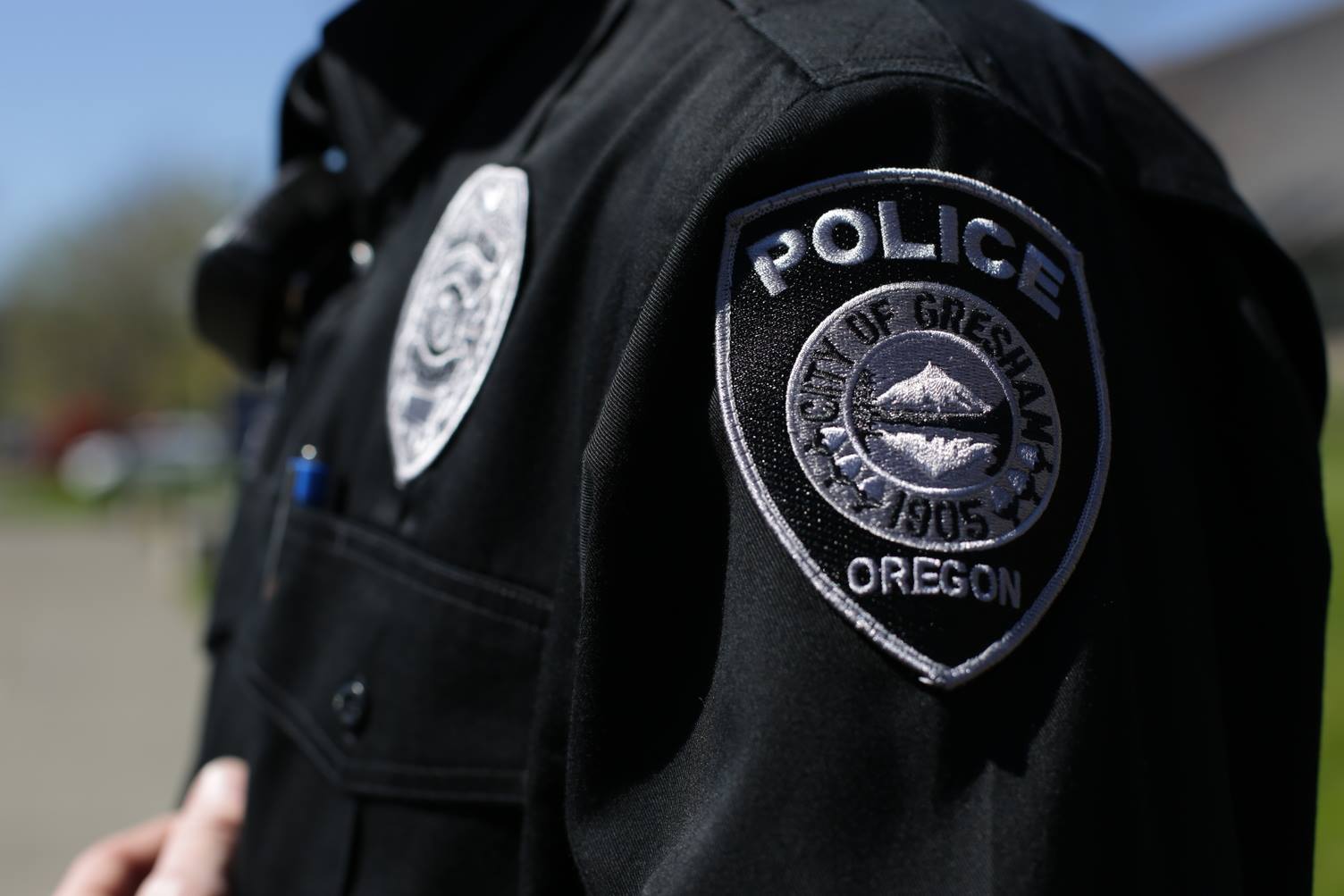Portland’s new art funhouse Hopscotch is almost ready to rock
Published 5:00 pm Friday, May 19, 2023

- A rendering showing the halls between interactive art exhibit rooms at Hopscotch Portland, which opens June 9.
Hopscotch Portland, a permanent art, light and sound experience in the Central Eastside, opens June 9. It could give the city the equivalent of defibrillator paddles to the chest. The Central Eastside has just undergone a 90-day reset intended to make it more friendly, with increased police patrols and sweeps of homeless camps and vehicles. Maybe Hopscotch can stem the outmigration of businesses, bars and places to go after dark?
Trending
A room with a white inflatable floor for bouncing on, where projection mapping
- allows people’s movements to create colored ripples and waves.
- A “Rainbow Cave,” consisting of thousands of tufted, white, plastic bags and colored lights, making a dreamy ice cave where couples often feel the urge to propose.
- A “Secret Garden” where listeners can hear recordings of secrets told anonymously, and record their own in a mock phone booth.
- A space where people are encouraged to dance and view a delayed video of themselves on a giant screen.
- In another room guests are handed rattle cans that work digitally, and everything they tag or draw is realistically projection mapped on the walls, temporarily.
These are some of the exhibits at the most exciting new art venue to come to Portland in a decade.
The former Orchards Hardware space in the Goat Blocks at 1020 S.E. 10th Ave., is being transformed into a permanent walk-through art exhibit, complete with bar and gift shop, that makes gallery hopping fun. Hopscotch Portland will have 14 installations designed to wow viewers. Adults pay $24 for a timed-entrance ticket but can stay as long as they like.
Trending
Waechter Architecture is building out the 23,000-square-foot space, turning it into a series of hallways and hubs, a warren of rooms linked by trippy LED-lined corridors.
On a recent May morning, Nicole Jensen, who cofounded Hopscotch with Hunter Inman, did a walk-through, showing off renderings on an iPad. Jensen explained how it all began as a pop-up at South By Southwest, the multimedia conference held in Austin, Texas. The first permanent Hospcotch opened in San Antonio in 2020.
Red light green light
Hopscotch is all timed tickets and signed waivers, and is cashless. The check-in room sets the mood, with a red light show installed in the ceiling. It leads straight to a bar, which will have above-average cocktails and food by chef Sara Hauman, she of “Top Chef Portland” (Season 18) and $16 cans of clams at Tiny Fish Co.
The first room consists of places to sit and look at giant murals by local artists, including the surreal flash art of tattoo artist Winston the Whale. Winston the Whale’s tattoo style is bold, technicolor flash art, and his mural has his signature images: rainbows, amanita mushrooms and circuit boards.
Painter David Rice has been doing murals across the country for seven years, bound by the staid rules of public art. He was brought in by Portland Street Art Alliance, which gave the artists free range in their design. “New Topography,” Rice’s mural at Hopscotch, is daring and ambitious, like his paintings on canvas for Antler Gallery on Alberta Street. Rice told Pamplin Media that in this piece he is “exploring identity branching between themes of feminine and masculine, manmade and organic.” He paints freehand from a collage he made in Photoshop. It depicts an African American man wrapped in paper, surrounded by lush parrot tulips. There is a splash of blue paint on the right side that could be accidental, but Rice did it deliberately.
“That’s just to break the plane, to do something totally organic that has no form,” Rice said. “This was an awesome opportunity to do something that I hadn’t been able to do at a scale like this before. So super, super grateful for that opportunity.” The equivalent of a museum with couches in front of its larger paintings, this is the kind of space where people might sit and reflect on one image, a change from the frenzied scrolling of screen life.
The mural room is more of a lounge, but after that things become more interactive.
Jensen calls the hallways “palate cleansers.” You might need a sick bag after “Quantum Trampoline,” where you bounce around on the floor and off the walls on psychedelic projections by Kuflex Lab. Multicolored ripples and waves follow the human body everywhere, like a bouncy house for adults, although kids are welcome too.
Full color experience
Todd Moyer created the “Digital Graffiti” room. Painting colors in the air has been possible for a decade using wands and virtual reality goggles, but this simulated tagging feels more natural, since other people in the room can see what you are doing, too. The images fade after a minute to give the next person a turn.
“We kind of have to kick people out of this room. You know, they start drawing their dog… This one’s really popular because of the customization. You write your name, your child’s name, your company’s name…” said Jensen.
Plastic woman
Basia Goszczynska is a Polish Canadian (and new U.S. citizen) who works in Brooklyn, creating works out of recyclable materials. She’s creating her sixth “Rainbow Cave” from plastics bags with misprints and odd cutoffs, donated by Indigo Plastics of Hicksville, New York. (Marine debris is too brittle to do this work with.) She and her assistants take the white bags, pull them through the holes in fishing nets, and sew them with paracord. They make four-by-four-foot panels and drape them over curved wooden forms to make what feels like an ice cave. They are lit with changing colored lights on the floor, which cast dramatic shadows.
She goes by the name Basia. She explains, “The work was inspired by my mixed emotions about plastic, seeing on the beach and infiltrating our food chain, but another side of me was in awe of how amazing the material is, and how much it’s needed. I’ve come to the conclusion that plastic is very much like water, where if you get too much of it, it becomes a flood.”
Basia talks about the rainbow in Genesis after Noah’s flood, as a sign of hope. She also references Plato’s Allegory of the Cave.
“The work became a lot more about this idea of containment, and the lights are this invitation to shed light upon a difficult issue and to build the space for conversation about the change that we would like to see when it comes to single use plastics,” Basia said.
Some people just love the selfie-friendly shapes and lighting, and the acoustics which are eerie, with very little echo.
What do people do normally when they’re in the cave?
“Propose to each other!” said Basia. It’s happened half a dozen times. “I could not imagine a better compliment than to have people want to propose in one of my artworks. I’m just happy to create something that inspires love, right?”
She adds, “Through the making of this work, I’ve become a Christian, which was very surprising to me.” She installed Rainbow Cave in Saudi Arabia and while in a pool, she was born again.
Would she have a religious service in one of her caves?
“I’ve thought of actually building one in my own studio and starting a church!”
Shhh!
Paloma Cortez and Pamela Rachél’s “Secret Garden” began in the pandemic when people were isolated. It is about what holding secrets in does to the body. People stand under audio domes in a fake garden and just listen. “In the garden, magic can unfold and secrets unfold,” said Rachél.
Cortez says she can’t really repeat many of the secrets she hears, “They’re so very inappropriate, but they’re really funny, it makes you feel a little better about yourself,” she said with a chuckle.
They’ve never had a secret where they call the police. “One was ‘I picked up a hand outside of a dumpster and instead of calling the cops, I just threw it right back into the dumpster.’ There are some wild things,” said Cortez.
They get, on average, five secrets a day on the hotline, mostly 30 seconds long, just the facts.
“One that always gets me in San Antonio, this kid says, ‘I really loved my dog that passed away more than my new dog.’ It’s something they didn’t feel comfortable telling maybe their parents or their students at school,” said Rachél.
It’s a rare thing, an artwork that is about other humans’ feelings, not just our own.
Money
Ticket prices won’t cover all the expenses. Both Hopscotches are also funded by a Los Angeles lawyer Brian Claypool, whom Inman met through mutual SXSW friends.
“Brian was actually a victim in the Las Vegas shooting earlier that year, he was at that concert,” said Jensen. (Claypool was not shot.) “It really set off this need for (Claypool) to help people find connection, be part of something bigger than yourself, and be inspired and connect people through art. So, we did a short-term exhibition in Austin and put all of that money into our San Antonio location. Now we’re putting all that in here.”
The team has been planning Hopscotch Portland for two years and Jensen, her wife and 18-month-old child moved here last October.
“My wife and I just feel really welcome here. And the inclusiveness of this community has been life-changing. We’ve really love it and want to immerse ourselves in the community. The artists just embrace individualism so much, it’s really inspiring,” said Jensen.
Two other exhibits are a bunch of pool noodles with lights in them, and augmented reality pieces called Augmented Normalcy that are creating custom software and headsets. “It’s like playing a video game with yourself. So you’ll see yourself interacting throughout the space.They’re supposedly adding horns to the headsets for fun.”
Before you exit though the gift shop, there’s a maze of lights and slogans that it make clear you are in a tolerant space.
“The 33 panels will say things like ‘You’re brave, you are beautiful, pride lives here, my vote my voice,’” said Jensen, who is on the National Board of Governors of the Human Rights Campaign. “We partner with them to bring their message to life.”
As museums are finding out, people who find museums and galleries otherwise dull will pay good money and queue around the block for 30 seconds in a Yayoi Kusama Infinity Mirror Room.
Hopscotch is reminiscent of the art at Burning Man, or immersive spaces such as Meow Wolf (which has gone mainstream with branches in Santa Fe, Denver, Las Vegas and Dallas). Letting people sit on the floor at the light show Artechouse in New York has proved good box office. 30 minutes inside a Van Gogh screensaver? People love it. Why pay millions for original content from art superstars, when you can entertain more people this way? At these immersive digital experiences, it’s art, but primarily it’s fun.
Cofounders Nicole Jensen and Hunter Inman are dedicated to creating experiences with real impact through Hopscotch. As Inman states, “I am fascinated by the intersection of art and technology, and by the shifting way in which the world defines art.”
Portland is lucky in that it still has a few landlords who hate to see a building sit empty. The artist-friendly developer Killian Pacific owns the Goat Blocks and the nearby Electric Blocks, which are used for the Portland Winter Light Festival, of which Hopscotch is a sponsor. It’s all connected.







